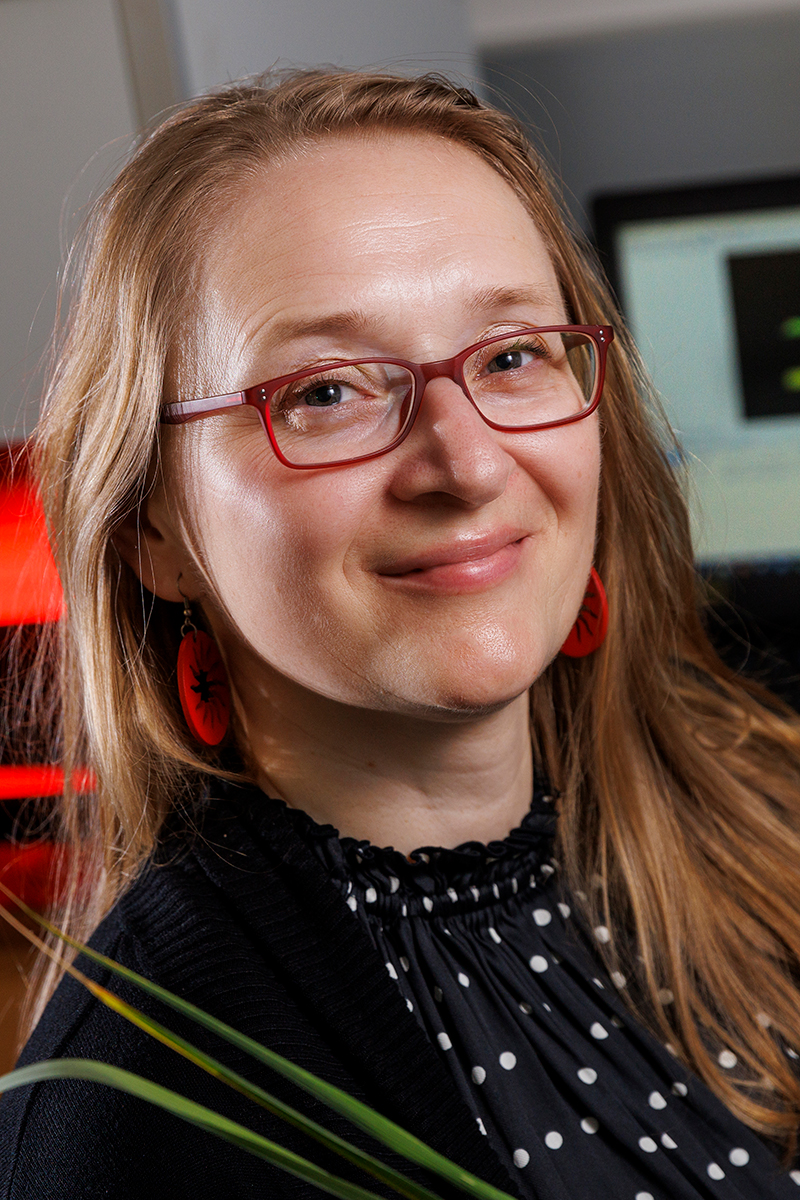
A University of Nebraska-Lincoln biochemist is using plant phenomics techniques in novel ways to further her research.
Katarzyna Glowacka, assistant professor of biochemistry, received a five-year, nearly $1.4 million grant from NSF’s Faculty Early Career Development Program. She will delve into the role non-photochemical quenching (NPQ) plays in enabling miscanthus to fend off cold-induced damage.
Miscanthus is a perennial grass that survives better against cold weather than other plants in its class, known as C4 plants. The C4 plants — which include maize, sugarcane, and sorghum — use a photosynthesis process that produces four carbon atoms from its first carbon compound.
Glowacka wants to understand what sets miscanthus apart, and she hypothesizes that it regulates NPQ in a unique way. She has worked with both miscanthus and NPQ throughout her career and looks forward to combining the two research areas in this project.
She first saw UNL’s phenotyping facilities when she interviewed for her current position and quickly realized the phenomics community and resources could be a strong asset to her work.
“Coming to Lincoln I was impressed by the field phenotyping facility, so I built my lab research around the idea that I can use it,” she said. “That’s a big advantage of this place. I may be in biochemistry, but I have an interest in programming the biophysiological behavior.”
For this research project, she will be using the Agricultural Research and Development Center in Mead, Neb. It is the first cable-driven high-throughput field plant phenotyping facility in the U.S. and features Spidercam, an automated cable suspended carrier system. Spidercam holds multiple cameras that can be accurately positioned over a small plot for sensing and plant imaging.
She plans to use phenotyping to obtain in fine resolution very detailed information about how the plants react to stresses in the field. Her team will be able to gather multiple rounds of data on each plant — gathering more information on how the plants respond before, during and after temperature changes. This approach will better emulate real-world conditions while providing a comprehensive range of data.
“We’re interested in how the plants are fighting a combination of low temperature with high light conditions,” she said. “We can do multiple rounds of imaging of every single plant in the field when the stress is coming up and going down.”
Hyperspectral cameras will allow her team to calculate Photochemical Reflectance Index (PRI), which will track changes in pigment structure. These data will provide insight into photo protection, the ubiquitous mechanism plants use to protect themselves from too much energy.
“We’re excited to calculate the PRI when the stress is present; it’s a non-destructive way to look at NPQ,” she said.
Glowacka plans to bring a multifaceted approach to her phenomics work by combining high-throughput phenotyping with genetics approaches and redox metabolomics. Genetics approaches enable an in-depth look at the roles of NPQ-related genes, and redox metabolomics provide an analysis of how NPQ impacts the plant as a whole.
“Phenotyping is an awesome thing but I didn’t want to stop there,” she said. “We will see the effect, but I want to know: What is the reason.”
The five-year grant could have significant impacts on furthering scientific understanding of C4 plants like maize and sorghum. This research will also be the first time the Lincoln facility works with a perennial species, allowing Glowacka’s team to gain insight into chilling events throughout the entire growing season.
“My scientific interest is to have some impact on improving the crops,” she said. “It’s really a hope that we’ll give some blueprint for designing the better crops which are more chilling-tolerant and therefore yielding better in climate changing world.”
Learn more about the services the UNL Plant Phenotyping Facilities provide on our website.